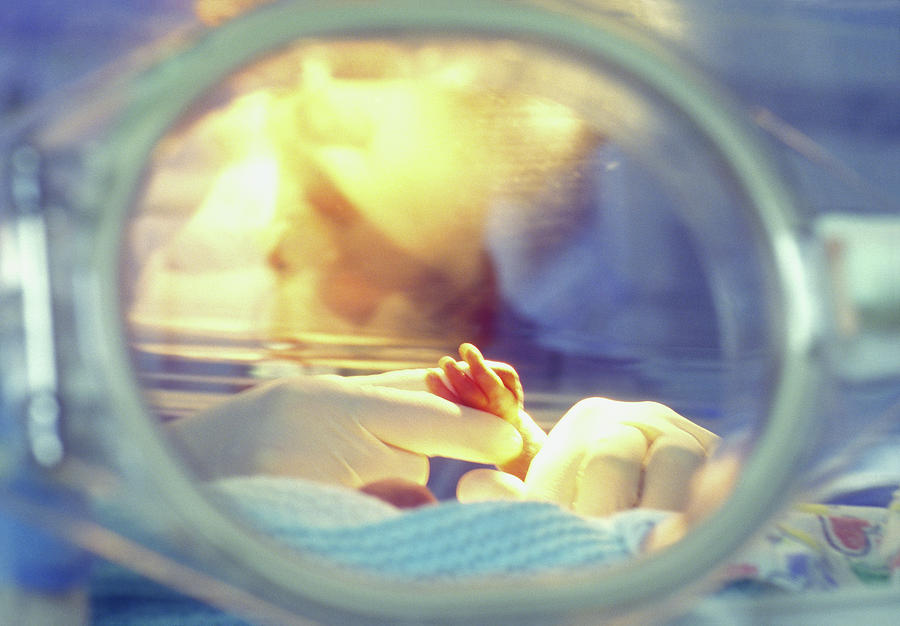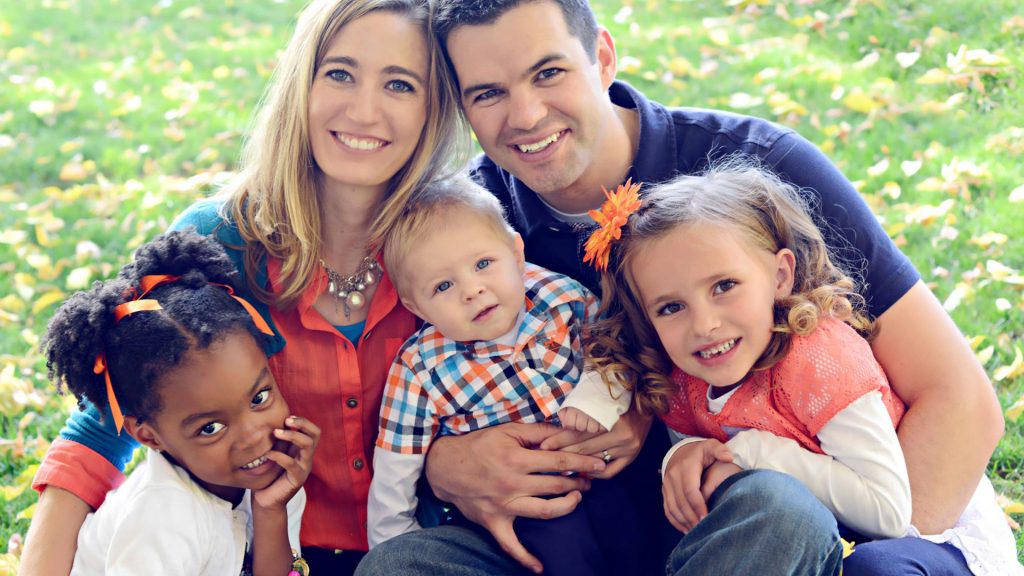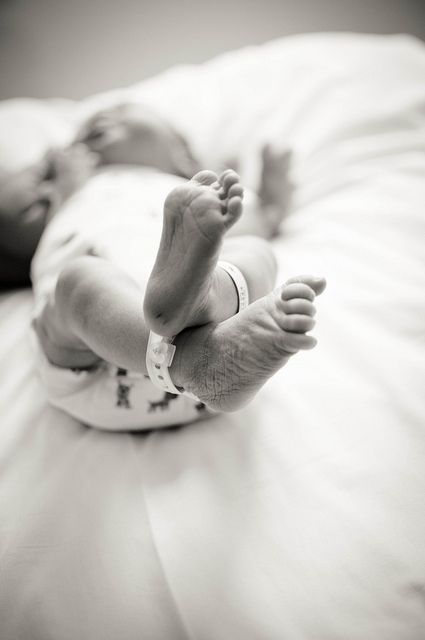Early symptoms for twins
Twin Pregnancy Week by Week
So, you’ve hit the jackpot—you’re pregnant with twins! While you’re adjusting to this life-changing news, your little ones are already growing and preparing to meet you! As you embark on this double adventure, it can be helpful to know about some of the common twin pregnancy symptoms that may await you week by week.
Twin Pregnancy: First Trimester
In the first few weeks of your twin pregnancy, you might notice some typical signs of early pregnancy, such as breast tenderness, fatigue, nausea, and a missed period. During your first trimester, a home pregnancy test can confirm your hunch that you're pregnant, and eventually an ultrasound scan at your healthcare provider's office will reveal you are pregnant with twins.
Although the first few weeks are a little uneventful, the first few months are quite exciting! Both of your babies develop from a cluster of cells to a tiny fetus with a heart, spinal cord, head, and limbs.
Read on to learn about twin pregnancy development and symptoms, week by week during the first trimester.
3 Weeks
After the first three weeks of pregnancy, you may start to feel a few pregnancy symptoms. And when it comes to a twin pregnancy, there’s quite a lot going on in that belly of yours, which is now nurturing either identical or fraternal twins.
Identical twins. When a sperm fertilizes an egg, it becomes a single cell called a zygote, which has 46 chromosomes that determine your baby’s sex and physical traits. When you have one zygote that splits into two during early pregnancy and grows into separate embryos, you’ll have identical twins. Because they come from the same zygote, they will have the same chromosomes and be the same sex.
Fraternal twins. If you have two zygotes, from two eggs fertilized by different sperm, these twins will not be identical and can be either the same or different sex. Fraternal twins are more common than identical twins.
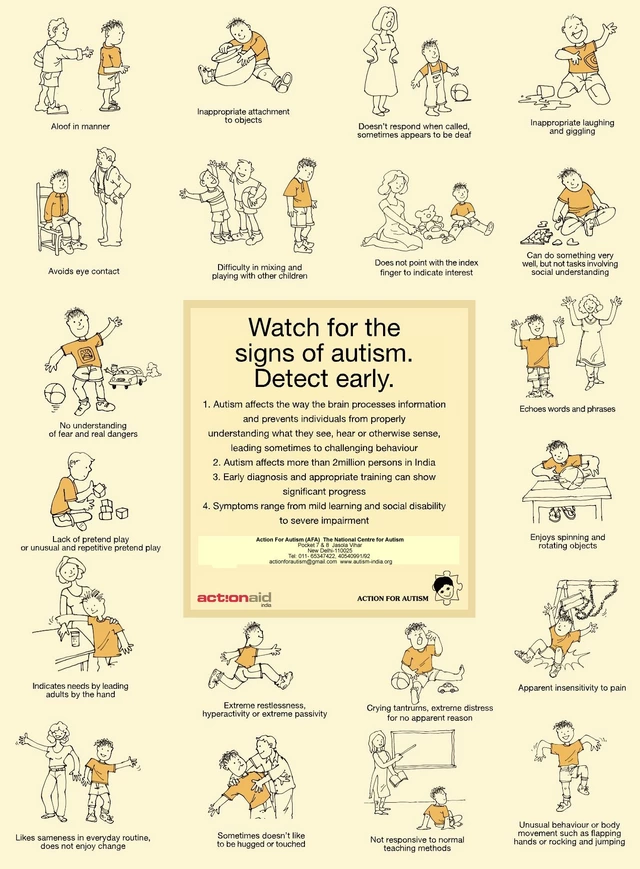
4 Weeks
At around 4 weeks pregnant, some important developments occur, including implantation. This is when you may notice one of the first symptoms of pregnancy, which is implantation bleeding.
Implantation in the uterus. Around eight or nine days after fertilization, the rapidly dividing ball of cells, now known as a blastocyst, will burrow into the lining of the uterus. Each blastocyst, two in the case of a twin pregnancy, will grow into an embryo.
The placentas begin to grow. About one week later, the outer layer of the blastocyst will begin to form a placenta for each baby, providing nourishment over the course of your pregnancy. In some rare cases, the babies may share one placenta.
5 to 8 Weeks
When tracking pregnancy symptoms week by week, whether with one baby or twins, 5 to 8 weeks pregnant is when nausea and vomiting—aka morning sickness—might kick in. Though the precise cause or causes of this condition are unknown, the pregnancy hormone human chorionic gonadotropin (hCG) may be a contributing factor. No one loves having this unpleasant symptom, which can be (but isn’t always) more severe during a twin pregnancy, but many moms-to-be choose to think of it as a sign that their pregnancy is going well! This is important considering all the growth and development your babies are experiencing during this time:
No one loves having this unpleasant symptom, which can be (but isn’t always) more severe during a twin pregnancy, but many moms-to-be choose to think of it as a sign that their pregnancy is going well! This is important considering all the growth and development your babies are experiencing during this time:
Your twins start forming brains and spinal cords. Around 6 weeks, your babies’ spinal cords and brains will develop from the neural tubes.
Little arms and legs start to form. By 8 weeks of your twin pregnancy, your babies will have buds for limbs that look like little paddles.
Two heartbeats. The tissues that form your babies’ hearts will begin to develop at this time. Heartbeats may even be detected during an ultrasound exam offered by your healthcare provider during this trimester. Ultrasound is the way most women find out they are pregnant with twins, often at around 12 weeks of pregnancy.
All major organs take shape.
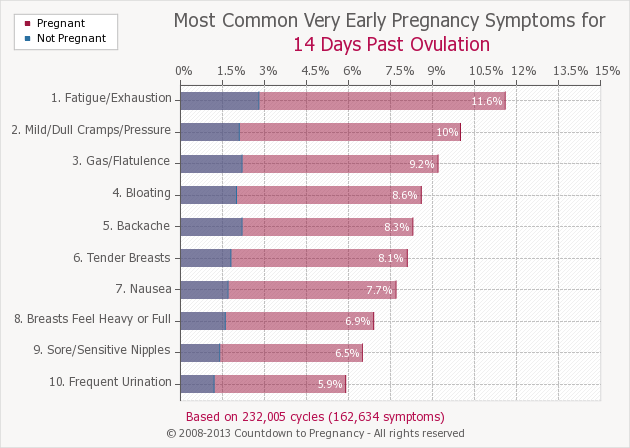 By the end of 8 weeks, all your babies’ major organs will have started to develop.
By the end of 8 weeks, all your babies’ major organs will have started to develop.
9 to 13 Weeks
As you enter the final weeks of the first trimester, you may be surprised to learn what’s happening in that baby bump of yours.
Fingers, toes, and nails begin to appear. Your tiny duo will start to develop fingers, followed by little toes taking shape; by 12 weeks, fingernails will also begin to sprout.
Facial features take shape. Twelve weeks into your pregnancy, your twins’ faces are less broad and more defined. Your babies will have eyelids and a more developed profile, with a formed nose, eyes, and upper lip.
Tooth buds form. Your babies’ future teeth are already in place, as tooth buds have appeared under the gums.
Your Twin Pregnancy in the Second Trimester
Twin pregnancy symptoms, when tracked week by week, aren’t too different from those in a singleton pregnancy.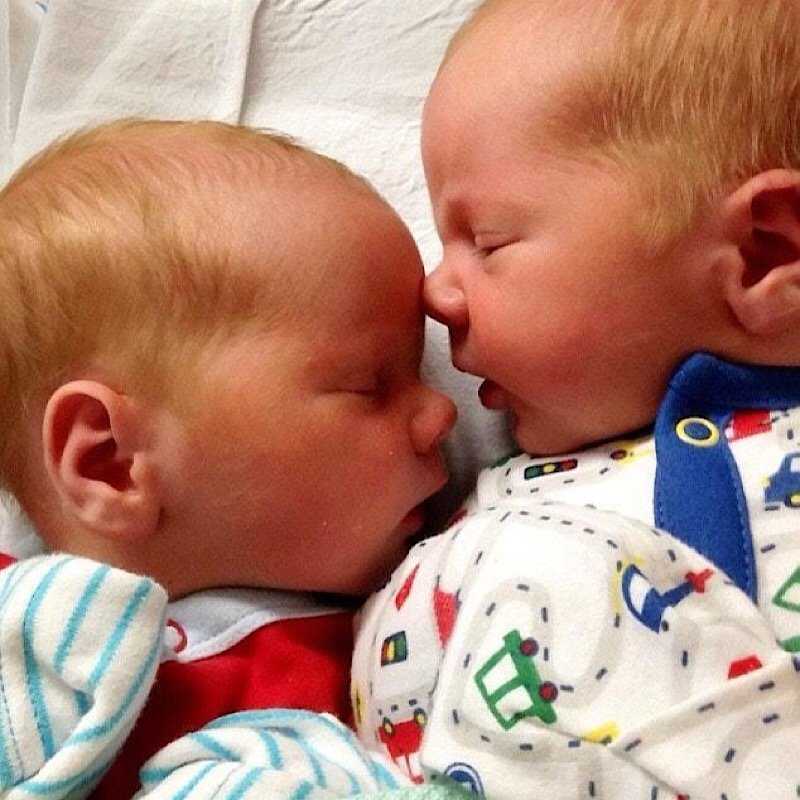 However, twin moms-to-be usually show their bumps sooner, and during the second trimester, it will become increasingly obvious that you’re pregnant with twins. You might also feel more uncomfortable and tired than singleton moms during this time or gain more weight, which is completely normal—after all, your body is a nourishing home to two developing babies!
Read on to learn about twin pregnancy development and symptoms, week by week during the second trimester.
However, twin moms-to-be usually show their bumps sooner, and during the second trimester, it will become increasingly obvious that you’re pregnant with twins. You might also feel more uncomfortable and tired than singleton moms during this time or gain more weight, which is completely normal—after all, your body is a nourishing home to two developing babies!
Read on to learn about twin pregnancy development and symptoms, week by week during the second trimester.
14 to 17 Weeks
The beginning of your second trimester is a busy time for your babies. They’re gaining weight and becoming more active. As for you, you’re entering what’s known as the golden period of pregnancy, when morning sickness and fatigue finally start to subside, and you feel more energized.
Limbs will move. Your babies will start to jerk their arms and legs, but you probably won’t be able to feel anything until they’re a bit bigger.
Bones start to harden.
 The bones of your twins will begin to harden, particularly the head and long bones.
The bones of your twins will begin to harden, particularly the head and long bones. Little eyes may move. Although their eyes are still closed, at 16 weeks, your babies can slowly move their eyes behind the lids. Your little ones should also have eyebrows and eyelashes at this point, too.
A protective coating forms on the skin. Your babies will start to acquire a greasy, waxy coating known as vernix, which helps shield their skin from the amniotic fluid.
18 to 22 Weeks
A few new aches and pains could crop up at this time, thanks to your growing uterus and hormonal changes. To help ease the discomfort, try adding some exercise to your daily routine, if your healthcare provider gives you the OK. Exercising while pregnant may not only minimize discomfort but also help boost your energy level and increase blood circulation, which benefits your twins.
Your twins may suck their thumbs. Your growing duo will develop the sucking reflex and may even suck their thumbs.
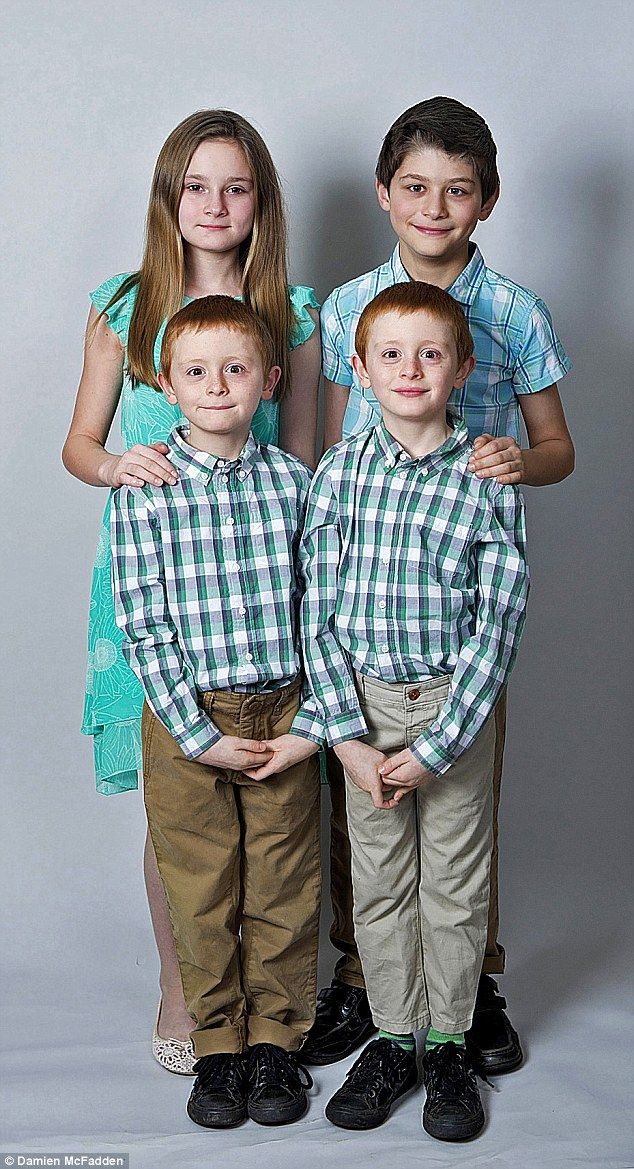
Your babies get active. During these weeks you may detect some gentle fluttering or wriggling. Before long, these movements will morph into kicks and jabs!
Your babies can hear. By 18 weeks, your babies may even begin to hear, and their ears will begin to stand out at the side of the head.
Your babies grow hair. Just after 20 weeks, your babies will be covered with a fine, downy protective hair called lanugo. Not only that, your little ones are also continuing to grow eyebrows and hair on their heads!
23 to 27 Weeks
You may start to develop some new symptoms as your twin pregnancy progresses week by week in the second trimester. For example, it’s possible to feel Braxton Hicks contractions, a sign that your body is practicing for labor. These practice contractions are also known as false labor, as they’re not the real deal. Your babies are also making progress and getting ready for their big entrance.
Your twins form fingerprints. Ridges in your babies’ palms and soles are becoming fingerprints and footprints.
Your babies can respond to sound. Your babies may begin to move in response to familiar sounds, such as your voice.
Little lungs develop. At around 26 weeks, the lungs forming in your babies' chests are slowly preparing to make breathing motions. They are producing a substance called surfactant that helps the air sacs in the lungs stay inflated, which is necessary for breathing.
Your Twin Pregnancy in the Third Trimester
In the third trimester, some of the most common twin or singleton pregnancy symptoms that could appear week by week include backaches as well as swelling in your hands, feet, and legs. As a result, you might find it hard to sleep or walk comfortably.
Meanwhile, your twins are getting ready for the big day! During this time, they’re listening to familiar sounds, such as your voice, and are likely settling into the optimal position for a vaginal delivery, which means both babies have their head down. In some cases, only one twin may be facing headfirst, or both twins are facing feet first. Check the visual below to get an idea of how your babies might settle in the womb. And keep in mind that with twin pregnancies, there’s a higher likelihood of needing a cesarean delivery or giving birth prematurely.
In some cases, only one twin may be facing headfirst, or both twins are facing feet first. Check the visual below to get an idea of how your babies might settle in the womb. And keep in mind that with twin pregnancies, there’s a higher likelihood of needing a cesarean delivery or giving birth prematurely.
Although you might have checked our due date calculator, be aware that in an average twin pregnancy, twins are born closer to 35 weeks than to 40 weeks, so it’s worth getting prepared early. Make sure you have doubles of all the clothes, cribs, wipes, and diapers you’ll need! And since double the fun means double the price, earn cash and rewards by downloading the Pampers Club App.
Read on to learn about twin pregnancy development and symptoms, week by week during the third trimester.
28 to 32 Weeks
At this stage, your body is making more blood than it usually does, and your heart is pumping quickly to circulate it throughout your body. And, naturally, your baby bump continues to expand week by week, as your twins grow and develop.
Your twins can open and close their eyes. Your twins may be able open and close their eyes and sense changes in light. However, they will spend most of their time sleeping with eyelids closed.
Brains growing. Your babies’ brains are growing quickly at this stage of your pregnancy. Parts of the brain can now control body temperature, so your twins are not solely dependent just the temperature of the amniotic fluid to stay warm.
Your twins have finished their major development. By now, your babies will have finished most of their development and start to gain weight rapidly. At 32 weeks, your babies may start to shed their lanugo, the fine hair that covered their bodies.
33 to 36 Weeks
As mentioned above, those who are pregnant with twins can expect an earlier delivery. So, at this point in your twin pregnancy, you’re in the home stretch, and your babies know it!
The lungs are preparing to breathe.
 Your babies’ lungs are maturing and preparing to breathe outside the womb.
Your babies’ lungs are maturing and preparing to breathe outside the womb. Twins gaining weight. During the last few weeks of your pregnancy, your twins will continue to build fat layers and put on weight. Most twins will be born smaller than singleton babies, weighing on average 5.1 pounds.
Getting ready for birth. Most women give birth between 37 and 42 weeks. However, if you’re expecting twins, you could give birth as early as 35 weeks, so keep an eye out for any signs of labor and discuss your options with your healthcare provider.
In the video below, watch one of our partner nurses offer advice on when to head to the hospital as the signs of labor begin.
The Bottom Line
Were you not expecting two for the price of one? After the initial surprise of a twin pregnancy, it’s completely natural to feel overjoyed, overwhelmed, or even shocked for a while! But, knowing the symptoms of a twin pregnancy and what awaits you week by week can help you feel confident along the way and offer some peace of mind. In some ways, a twin pregnancy isn’t that different than a singleton one. You’ll have a larger baby bump, of course, and you may feel more tired or experience other symptoms to a greater degree; but you’ll make similar progress as the weeks and months go by and your due date approaches.
However, to summarize a few important differences, a twin pregnancy might include
In some ways, a twin pregnancy isn’t that different than a singleton one. You’ll have a larger baby bump, of course, and you may feel more tired or experience other symptoms to a greater degree; but you’ll make similar progress as the weeks and months go by and your due date approaches.
However, to summarize a few important differences, a twin pregnancy might include
more checkups with your health provider
increased weight gain
an earlier delivery
your twins needing a little extra time in the hospital
higher risk for cesarean delivery and premature birth.
Think of it this way: though a twin pregnancy comes with its share of challenges, having twins means there are two babies to love and bring joy into your life! Hang in there and enjoy the journey as much as possible. You’ll be amazed to discover how your heart will grow twice as much!
Signs of twin pregnancy: is it possible to tell if you’re having multiples?
- Pregnancy
- Your Baby
By Irina Gonzalez
|
|
July 28, 2021
Early signs of a twin pregnancy include severe morning sickness, quick weight gain, and more breast tenderness.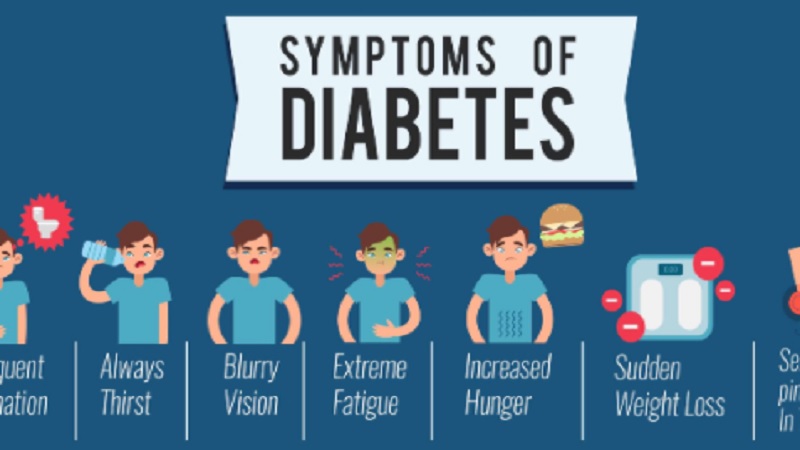 You may also notice an increased appetite or extreme fatigue. Plus, those who have a twin pregnancy may begin showing sooner. But the only way to confirm a twin pregnancy is with an ultrasound done at your doctor's office, typically during the first trimester. Your doctor may also be able to confirm if you're having fraternal or identical twins, but a DNA test can tell you for sure.
You may also notice an increased appetite or extreme fatigue. Plus, those who have a twin pregnancy may begin showing sooner. But the only way to confirm a twin pregnancy is with an ultrasound done at your doctor's office, typically during the first trimester. Your doctor may also be able to confirm if you're having fraternal or identical twins, but a DNA test can tell you for sure.
Photo credit: Thinkstock
- Are there early signs of twins?
- When will you find out you're having twins?
- The difference between fraternal and identical twins
Are there early signs of twins?
You won't know for sure if you're carrying twins until you have an ultrasound, but there may be a few early signs. Some telltale early signs that you may be carrying twins include more severe morning sickness, extreme breast tenderness, or gaining weight more quickly.
Extreme fatigue might be a sign that you're carrying twins, but being super tired during pregnancy can also be caused by things like a normal singleton pregnancy, stress, a hectic work life, and a lot of responsibilities.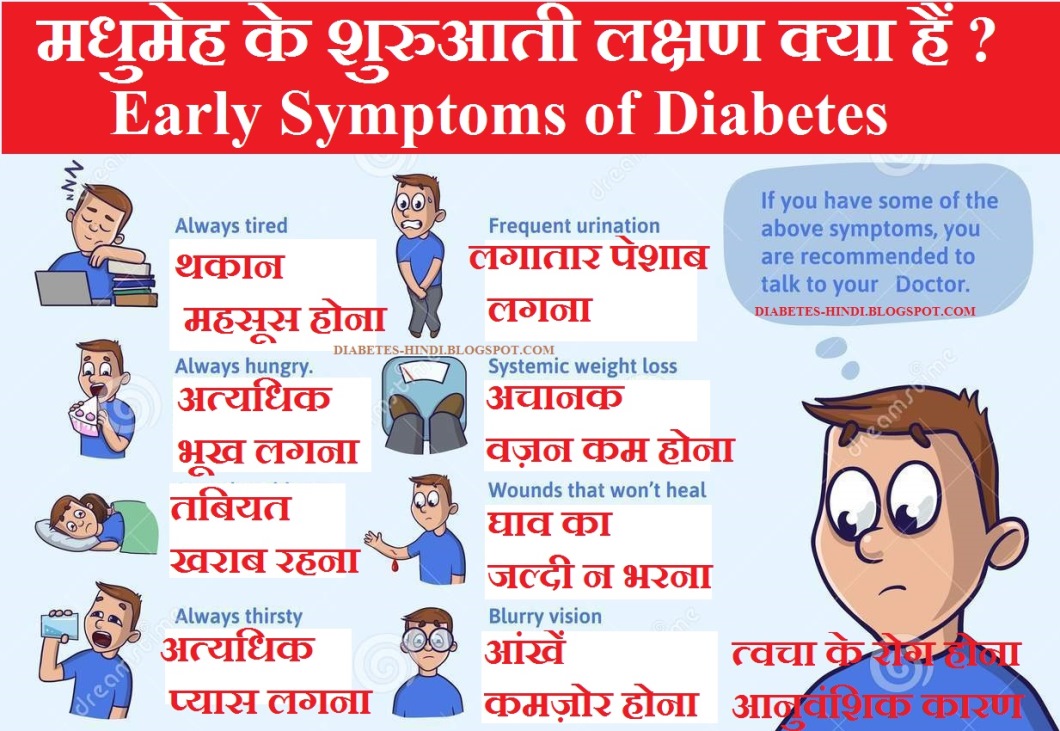 Although it's possible, extreme fatigue early on doesn't necessarily mean that you're definitely carrying twins.
Although it's possible, extreme fatigue early on doesn't necessarily mean that you're definitely carrying twins.
The same goes for excessive morning sickness, which many women pregnant with multiples do experience but many do not.
Other early signs of a twin pregnancy can include a greater appetite (which includes that extra weight gain), "showing" earlier in pregnancy, and feeling the babies' movement in two different parts of the stomach.
If you feel that you're having above average morning sickness, early pregnancy exhaustion, lots of breast tenderness, and are gaining weight quicker than you expected, you may be pregnant with twins.
When will you find out you're having twins?
Typically, you'll find out if you're having twins during a first trimester ultrasound. An ultrasound will usually be able to detect a twin pregnancy early on, but sometimes a twin pregnancy can be detected even earlier through a pregnancy blood test.
If you have a multiples pregnancy then you might have higher levels of human chorionic gonadotropin (hCG), aka the "pregnancy hormone. " But elevated hCG doesn't automatically mean that you're having twins either. You will still need to confirm your pregnancy status with an ultrasound.
" But elevated hCG doesn't automatically mean that you're having twins either. You will still need to confirm your pregnancy status with an ultrasound.
The same goes for detecting twins with a Doppler, which detects fetal heartbeat sounds. A skilled doctor or midwife may be able to find two heartbeats but, because you may be able to hear a single heartbeat in two different areas of the mom's stomach, this is not the best way to tell if you are having twins. Instead, have your doctor do an ultrasound to find out.
The difference between fraternal and identical twins
Once you know you're having twins, you might be wondering what kind of twins you have: fraternal or identical. If you have identical twins, or monozygotic, it means that your twins share an amniotic sac and came from a single fertilized egg that divided into two. Meanwhile, fraternal twins, or dizygotic, came from 2 separate fertilized eggs that developed in 2 separate amniotic sacs.
Your doctor will be able to tell in your ultrasound whether you have fraternal or identical twins, and can let you know.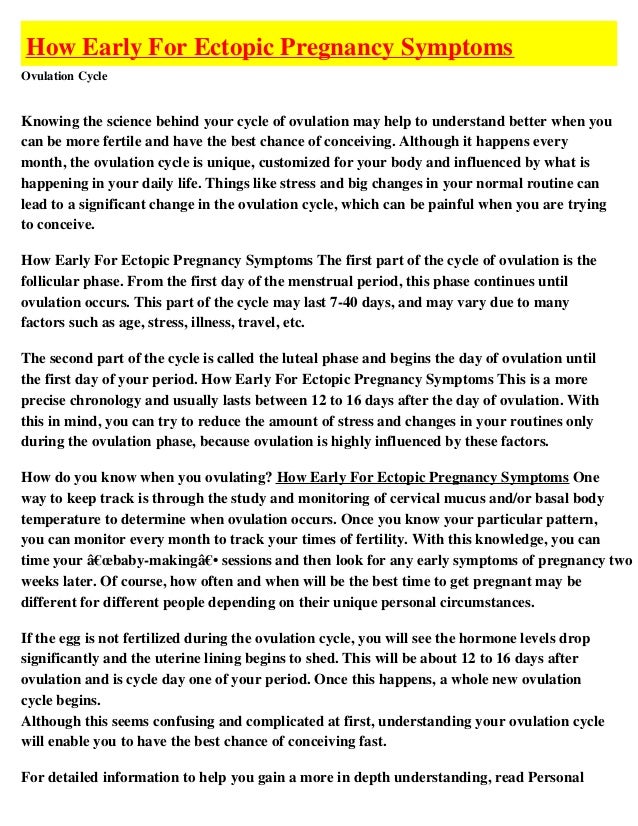 But the best way to determine if twins are identical or fraternal is through examining their DNA, since identical twins have the same DNA.
But the best way to determine if twins are identical or fraternal is through examining their DNA, since identical twins have the same DNA.
If you have fraternal twins, then the sex of your twins might be 2 boys, 2 girls, or a boy and a girl since fraternal twins are fertilized with 2 different sperm in 2 different eggs. Meanwhile, identical twins will always be the same sex at birth since they came from 1 sperm and 1 egg.
When you think of twins, you might be imagining two babies that look exactly the same - but that's not always the case. Since fraternal twins come from 2 different fertilized eggs, they can look very different from one another.
Depending on the type of twins, sometimes your doctor is able to tell if they are identical. However, in most instances, it 's not possible to tell for sure without a genetic test.
Learn more about twins:
- Your likelihood of having twins or more
- Is it true that giving birth to twins runs in families?
Sources
BabyCenter's editorial team is committed to providing the most helpful and trustworthy pregnancy and parenting information in the world.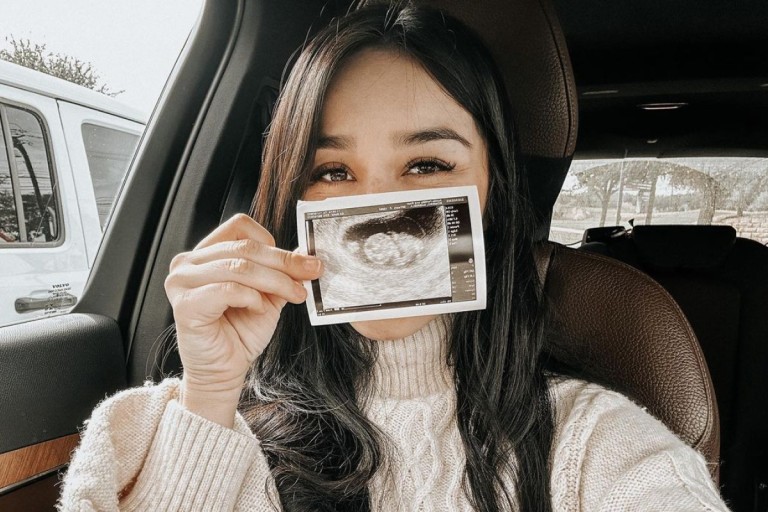 When creating and updating content, we rely on credible sources: respected health organizations, professional groups of doctors and other experts, and published studies in peer-reviewed journals. We believe you should always know the source of the information you're seeing. Learn more about our editorial and medical review policies.
When creating and updating content, we rely on credible sources: respected health organizations, professional groups of doctors and other experts, and published studies in peer-reviewed journals. We believe you should always know the source of the information you're seeing. Learn more about our editorial and medical review policies.
American Pregnancy Association. Pregnancy symptoms. https://americanpregnancy.org/unplanned-pregnancy/am-i-pregnant/pregnancy-symptoms/ [Accessed July 2021]
ACOG. Multiple Pregnancy. https://www.acog.org/womens-health/faqs/multiple-pregnancy [Accessed July 2021]
University of Rochester Medical Center. Symptoms and Diagnosis of Multiple Pregnancy. https://www.urmc.rochester.edu/encyclopedia/content.aspx?contenttypeid=85&contentid=P08020 [Accessed July 2021]
American Academy of Pediatrics. The Difference Between Identical and Fraternal Twins. https://www.healthychildren.org/English/family-life/family-dynamics/Pages/The-Difference-Between-Identical-and-Fraternal-Twins. aspx [Accessed July 2021]
aspx [Accessed July 2021]
Show more
advertisement | page continues below
advertisement
Featured video
All pregnancy, parenting, and birth videos >
Multiple pregnancy: 7 signs | Nestle Baby
Upon learning that she is pregnant, a woman wants to find out as soon as possible what kind of tiny miracle is inside her. And sometimes it turns out that there are two or even three miracles. Some perceive it with delight, others with excitement and fear, because two babies are a double responsibility, but at the same time a double happiness. Why does multiple pregnancy happen? Is it possible to find out about it in the early stages and whether there are external signs indicating such a double phenomenon - we will tell in this article.
Friday, January 19th, 2018
- Seal
- Share
Types of multiple pregnancy
There are two types of multiple pregnancy:
- monozygotic;
- polyzygous.

In the first case, the fertilized egg is split, due to which the formation of two or more identical fetuses begins. They all have the same chromosomes and are genetically identical. Therefore, when born, babies have the same appearance, the same physiological characteristics and even similar psychological inclinations.
Polyzygous pregnancy is the result of the fertilization of two different eggs at the same time. Such children may have a dissimilar appearance, because they have a different set of chromosomes.
Why does multiple pregnancy occur?
There are no reasons for multiple pregnancy, which would be unanimously confirmed by experts. According to doctors, the splitting of the egg in the case of a monozygotic pregnancy occurs due to the low oxygen content in the woman's circulatory system or acidity failures. One of the main factors is genetic predisposition. It also happens that a multiple pregnancy becomes a consequence of taking drugs, due to which several follicles begin to be produced in the ovaries. Doctors say that the likelihood of carrying twins increases after 35 years.
Doctors say that the likelihood of carrying twins increases after 35 years.
The first sign of multiple pregnancy is fatigue
The signs of multiple pregnancy that mothers should be prepared for is an increase in all the symptoms of a typical pregnancy. The tummy will be large and will grow faster, it will be harder to walk, toxicosis and the set of all classic pregnancy symptoms will “double”. The most common signs of multiple pregnancy are severe fatigue and drowsiness. The development of several fetuses requires more body resources, so a woman begins to get tired from the first weeks of pregnancy.
Experienced mothers who are already familiar with the symptoms of an "interesting situation" will immediately notice the difference, but primiparas (as doctors call them) can accept this condition as a natural phenomenon.
The second symptom is nausea
Nausea is a common thing for a pregnant woman. It occurs, as a rule, in the morning, the pregnant woman feels unwell, loss of strength and vomiting.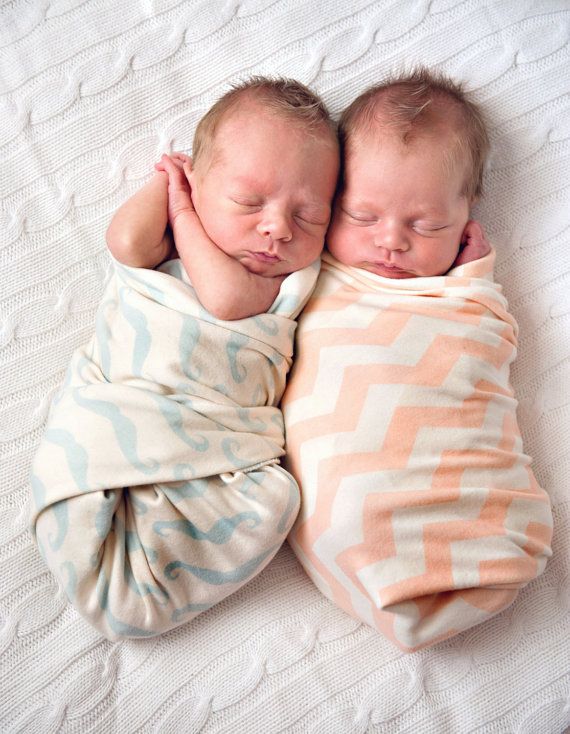 Together with nausea, the expectant mother can be tormented by heartburn. But the body is an individual mechanism for every woman. Therefore, a different manifestation at the same time will be completely normal. Someone spends every morning on the toilet, mourning their breakfast, and someone feels great and cheerful. Therefore, the absence of toxicosis is not a guarantee that there is only one inhabitant in the tummy.
Together with nausea, the expectant mother can be tormented by heartburn. But the body is an individual mechanism for every woman. Therefore, a different manifestation at the same time will be completely normal. Someone spends every morning on the toilet, mourning their breakfast, and someone feels great and cheerful. Therefore, the absence of toxicosis is not a guarantee that there is only one inhabitant in the tummy.
External signs of multiple pregnancy
In addition to their condition, many mothers want to know how to determine multiple pregnancy without ultrasound by external signs. Some external changes that a woman can notice on her own do exist, but they are not a 100% guarantee. Among them:
- skin changes. A surge of hormones often provokes dryness and flaking of the skin, as well as acne, increased pigmentation;
- big belly. To control weight gain and tummy growth, women often use norm tables, exceeding these indicators indicates a high probability of several fetuses;
- the appearance of a horizontal groove on the anterior wall of the uterus.

Methods for determining multiple pregnancy without ultrasound
Only ultrasound can determine the exact number of fetuses, which can be performed at 8-18 weeks of pregnancy. However, there are methods of determination that will help to refute or confirm your guesses already in the first weeks. If you want to find out about several babies on your own, you can use the usual pregnancy test. A bright and bold line will indicate a high level of hCG, which is more common in pregnant women with two or more fetuses.
With regard to the obstetric examination, the gynecologist may suspect a multiple pregnancy due to the condition of the uterus. A deep uterine fundus is determined by palpation and indicates two or more fetuses. In most cases, multiple pregnancies are passed down genetically and through generations. Were there twins or twins in the family? Get ready to become a mother of several "cubs" at once
More
articles from the specialists of the clinic "Mother and Child"
Arifullina Claudia Viktorovna
Gastroenterologist
Clinical Hospital "AVICENNA" SC "Mother and Child"
There is data on the frequency of twins in case of anomalies in the development of the uterus, characterized by its bifurcation (bicornuate uterus, having a septum in the cavity, etc. ). The cause of polyembryony may be the separation of blastomeres (in the early stages of crushing), resulting from hypoxia, cooling, acidity and ionic composition of the medium, exposure to toxic and other factors. Multiple pregnancy can occur: as a result of the fertilization of two or more simultaneously mature eggs, as well as the development of two or more embryos from one fertilized egg.
). The cause of polyembryony may be the separation of blastomeres (in the early stages of crushing), resulting from hypoxia, cooling, acidity and ionic composition of the medium, exposure to toxic and other factors. Multiple pregnancy can occur: as a result of the fertilization of two or more simultaneously mature eggs, as well as the development of two or more embryos from one fertilized egg.
Twins formed from two (three, etc.) eggs are called dizygotic (polyzygotic), those arising from one are called identical. The origin of fraternal twins (polyzygotic twins): the simultaneous maturation (and ovulation) of two or more follicles in one ovary is possible. There may be maturation of two or more follicles and ovulation in both ovaries.
A third way of the origin of fraternal (multi-ovular) twins is possible - the fertilization of two or more eggs that have matured in one follicle. The origin of identical twins: most often, the occurrence of identical twins is associated with the fertilization of an egg that has two or more nuclei. a single embryonic germ in the stage of crushing is divided into two parts; from each part an embryo (fruit) is formed. Twin twin. Fertilized eggs develop on their own. After penetration into the mucous membrane, each embryo develops its own aqueous and fleecy membranes; in the future, each twin forms its own placenta with an independent network of vessels, each fetal egg, except for the chorion and amnion, has an independent capsular membrane (decidua capsularis). In some cases, anastomoses are formed between the vessels of independent placentas. Twins can be same-sex (both boys or both girls) or different-sex (boy and girl). Their blood type can be the same or different. Identical twin. Identical twins have a common capsular and fleecy membrane and a common placenta; the vessels (both arterial and venous) of both twins in the placenta communicate with the help of numerous anastomoses. The water membrane of each twin is separate, the septum between the fetal sacs consists of two water membranes (biamniotic twins).
a single embryonic germ in the stage of crushing is divided into two parts; from each part an embryo (fruit) is formed. Twin twin. Fertilized eggs develop on their own. After penetration into the mucous membrane, each embryo develops its own aqueous and fleecy membranes; in the future, each twin forms its own placenta with an independent network of vessels, each fetal egg, except for the chorion and amnion, has an independent capsular membrane (decidua capsularis). In some cases, anastomoses are formed between the vessels of independent placentas. Twins can be same-sex (both boys or both girls) or different-sex (boy and girl). Their blood type can be the same or different. Identical twin. Identical twins have a common capsular and fleecy membrane and a common placenta; the vessels (both arterial and venous) of both twins in the placenta communicate with the help of numerous anastomoses. The water membrane of each twin is separate, the septum between the fetal sacs consists of two water membranes (biamniotic twins).
Identical twins always belong to the same sex (both boys or both girls), look alike, have the same blood type.
In fraternal twins, the membranes in the septum are arranged as follows: amnion - chorion, chorion - amnion; with monozygotic amnion-amnion.
Important signs for the diagnosis are: blood type (and other blood factors), eye color, hair color, skin texture of the fingertips, shape and location of teeth. In identical twins, these signs are completely the same. Fraternal twins share the same similarities as normal siblings.
MULTIPLE PREGNANCY
With multiple pregnancy, increased demands are made on the woman's body: the cardiovascular system, lungs, liver, nights and other organs function with great stress. In this regard, multiple pregnancies are more difficult than single pregnancies.
- Pregnant women often complain of fatigue and shortness of breath, which increases towards the end of pregnancy.
 The cause of shortness of breath is a difficulty in the activity of the heart due to a significant displacement of the diaphragm by the bottom of the uterus, the size of which is larger in multiple pregnancy than in singleton.
The cause of shortness of breath is a difficulty in the activity of the heart due to a significant displacement of the diaphragm by the bottom of the uterus, the size of which is larger in multiple pregnancy than in singleton. - Often there is a dilation of the veins of the lower extremities. By the end of pregnancy, there is often an increase in the urge to urinate due to the pressure of a large fetus on the bladder.
- Pregnant women often complain of heartburn and constipation.
- In multiple pregnancy, toxicosis occurs more often than in singleton pregnancy: vomiting, salivation, edema, nephropathy, eclampsia.
- With twins, polyhydramnios of one of the fetuses is often found, which leads to a sharp increase and hyperdistension of the uterus, shortness of breath, tachycardia and other disorders. Polyhydramnios is more common in one of the identical twins. In some cases, the polyhydramnios of one twin is accompanied by an oligohydramnios of the other fetus.

- Premature termination of multiple pregnancies often occurs.
- With twins, preterm birth occurs in at least 25% of women.
- Triplets are more likely to miscarry than twins. The greater the number of gestated fetuses, the more often preterm births are observed.
- The development of term twins is normal in most cases. However, their body weight is usually less than that of single fetuses. Often there is a difference in body weight of twins by 200-300 g, and sometimes more.
- Uneven development of twins is associated with unequal intake of nutrients from a single placental circulation.
- Often there is a difference not only in weight, but also in the length of the body of the twins. In connection with this, the theory of supergenesis (superfoetatio) was put forward. Proponents of this hypothesis believe that fertilization of eggs of different ovulation periods is possible, i.e., the onset of a new pregnancy in the presence of an already existing, previously occurring, pregnancy.

- Due to the uneven delivery of nutrients and oxygen, a significant developmental disorder and even death of one of the twins can occur. This is more commonly seen in identical twins. The dead fetus is squeezed by the second, well-growing fetus, the amniotic fluid is absorbed, the placenta undergoes regression. The compressed mummified fetus ("paper fetus") is released from the uterus along with the placenta after the birth of a live twin. Polyhydramnios of one fetus, which occurs during multiple pregnancies, often also prevents the other twin from developing correctly. With pronounced polyhydramnios, certain anomalies in the development of the fetus, which grows with an excess of amniotic fluid, are often observed. Rarely, fused twins are born (fusion can be in the head, chest, abdomen, pelvis) and twins with other malformations.
- The position of the fetus in the uterine cavity in most cases (about 90%) is normal. In the longitudinal position, different presentation options are observed: both fetuses are presented with the head, both with the pelvic end, one with the head, and the other with the pelvic end.
 With longitudinal presentation, one fetus may be behind the other, which makes diagnosis difficult. Less commonly observed is the longitudinal position of one fetus and the transverse position of the other. The most rare is the transverse position of both twins.
With longitudinal presentation, one fetus may be behind the other, which makes diagnosis difficult. Less commonly observed is the longitudinal position of one fetus and the transverse position of the other. The most rare is the transverse position of both twins. - The position of the twins in the uterus, both fetuses are presented with the head, one fetus is presented with the head, the second - with the pelvic end, both fetuses are in the transverse position
- In case of multiple pregnancies, women are taken on a special account and carefully monitored. When the earliest signs of complications appear, the pregnant woman is sent to the pregnancy pathology department of the maternity hospital. Given the frequent occurrence of preterm birth, it is recommended that a pregnant woman with twins be sent to the maternity hospital 2 to 3 weeks before delivery, even in the absence of complications.
RECOGNITION OF MULTIPLE PREGNANCY
Diagnosis of multiple pregnancy often presents significant difficulties, especially in its first half. In the second half, towards the end of pregnancy, the recognition of twins (triplets) is facilitated. However, diagnostic errors occur during the study at the end of pregnancy and even during childbirth.
In the second half, towards the end of pregnancy, the recognition of twins (triplets) is facilitated. However, diagnostic errors occur during the study at the end of pregnancy and even during childbirth.
When recognizing a multiple pregnancy, the following signs are taken into account:
- The enlargement of the uterus in multiple pregnancies occurs faster than in pregnancy with one fetus, so the size of the uterus does not correspond to the gestational age. The bottom of the uterus is usually high, especially at the end of pregnancy, the circumference of the abdomen during this period reaches 100-110 cm or more.
- The following signs are unstable and not sufficiently reliable: a) deepening of the fundus of the uterus (saddle uterus), the formation of which is associated with protrusion of the corners of the uterus with large parts of the fetus; b) the presence of a longitudinal depression on the anterior wall of the uterus, which is formed as a result of the fruits that are in a longitudinal position adjacent to each other; c) the presence of a horizontal groove on the anterior wall of the uterus with the transverse position of the fetus.

- The small size of the presenting head with a significant volume of the pregnant uterus and the high standing of its bottom also make it possible to suspect a multiple pregnancy. The presence of this sign is explained by the fact that the study determines the head of one and the pelvic end (in the bottom of the uterus) of another fetus, which lies slightly higher.
- Feeling the movement of the fetus in different places and probing the parts of the fetus in different parts of the abdomen (both on the right and on the left) also indicate multiple pregnancies.
Make an appointment
to the doctor - Arifullina Claudia Viktorovna
Clinical Hospital "AVICENNA" GC "Mother and Child"
GastroenterologyPediatric Gastroenterology
By clicking on the send button, I consent to the processing of personal data
Attention! Prices for services in different clinics may vary. To clarify the current cost, select a clinic
Clinical Hospital "AVICENNA" GC "Mother and Child"Novosibirsk Center for Reproductive Medicine
All directionsGynecological proceduresSpecialist consultations (adults)Specialist consultations (children)Laboratory of molecular geneticsGeneral clinical studiesProcedure roomTherapeutic studiesUltrasound examinations for adults
01.



